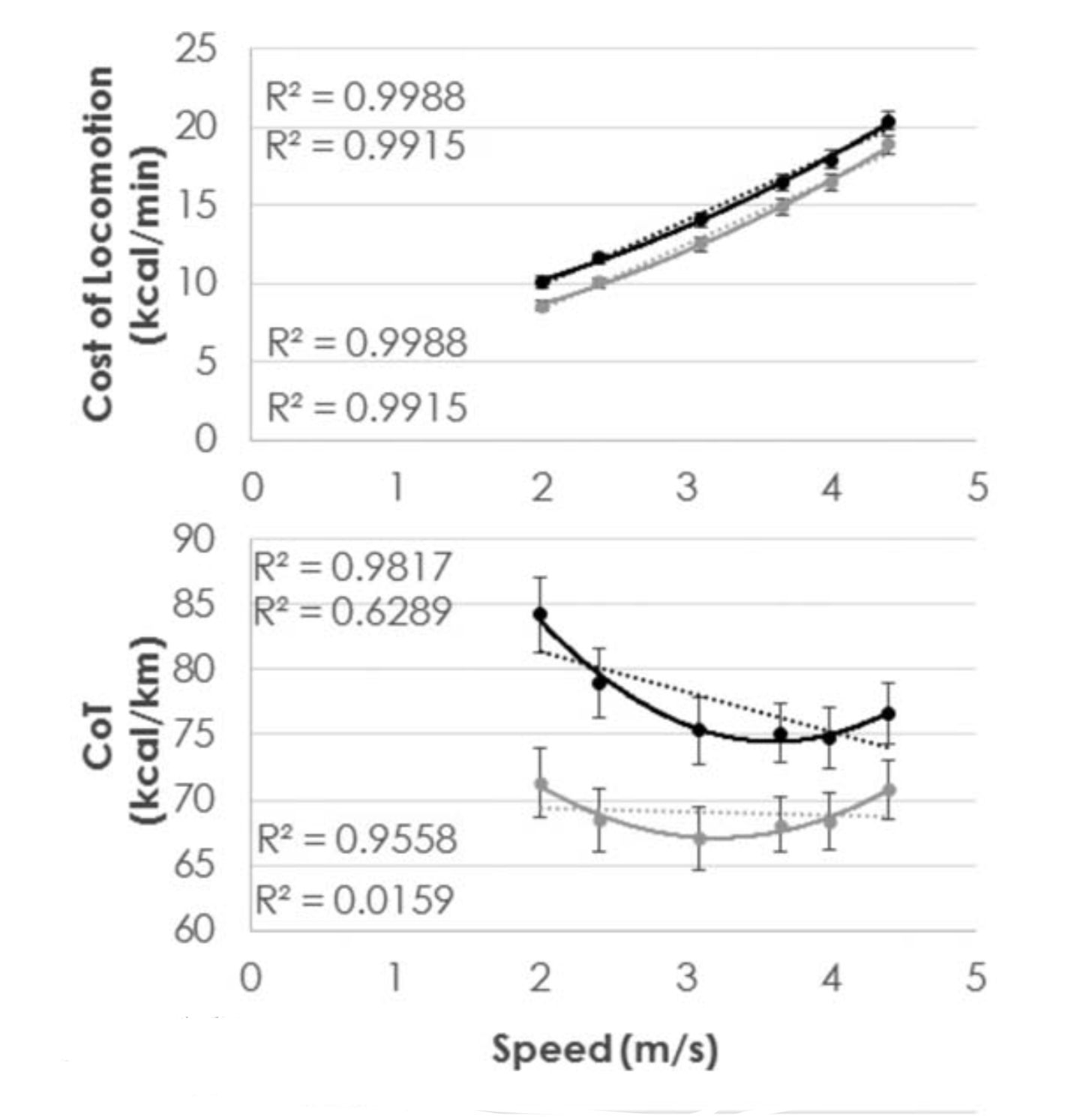From time to time I report on some interesting research paper I come along and which is (somehow) related to athletics. This time I would like to report on the findings of a Stanford team on the energetics of running. The title of their article is a catchy one: "Running in the wild, energetics explain ecological running speeds". (I tend to bristle whenever I see the word "ecological" but, since the article does not make a big issue out of this, one can surmise that it was put in the title in order to increase the probability of acceptance for publication).
For more than half a century (in fact since the seminal work of Margaria and Ceretelli) it was believed that since the energetic cost of running is proportional to the velocity, the amount of energy used to run a given distance is nearly the same whether one runs at a leisurely pace or at top speed. This would mean that the speed can be adapted to the task demands without any appreciable consequence as far as the total energy expenditure is concerned.
The constant energetic cost theory is of course not valid when it comes to walking since we know that the energetic cost of walking is proportional to the square of the velocity. The consequence of this is that there is an optimal step frequency which allows to mimise the energetic cost of walking. At this point and before presenting the results for running I cannot refrain from presenting the results of an ingenuous experiment by a canadian team of physiologists.
They used a robotic exoskeleton in order to shift the optimal step frequency of their subjects to higher or lower values of the preferred one. They found out that, after a few minutes adaptation, the subjects adapted the step frequency to the new energetic optimum.
Running, despite the high energetic cost it entails, has the advantage of allowing to adjust the speed to the task. It is believed that this is an adaptation of our hunting ancestors who would choose their speed so as to make it unsustainable to their pray.
The Stanford group performed a very large scale experiment involving some 4600 runners. What they found is that each runner has a preferred speed, a comfortable pace, independent of the length of the run and which moreover corresponded to a minimal energy use per distance. And the results were independent of the participants sex, age or body mass index. (Although the mean velocity of women was roughly 85 % that of men, a tad on the low side, since women's competition speeds are around 90 % of that of men).
The distances of the experiment were in the 2-10 km bracket. It is expected that when the distance increases beyond 10 km and fatigue sets in the comfortable speed can no longer be maintained. Similarly when it comes to training athletes are not expected to stay within their comfort zone.
The Stanford group investigated the optimal character of the preferred speed by performing laboratory measurements of the energetic cost (admittedly on a small cohort) of running on a treadmill. Their findings seem confort the conclusion that the preferred velocity is indeed the one that minimises the energetic cost.
At this point I must confess that I am a little perplexed. I am convinced that there is nothing wrong with the results of Margaria and his team: the energetic cost of running is proportional to the velocity. The problem is that the physiologists are using two different quantities: what they call "cost of locomotion" which is the energy expenditure in a unit of elapsed time and the "cost of transport" which is the energy expenditure in a unit of distance covered. Now, an elementary physics calculation tells us that if the former is linear in velocity the latter would be quadratic.
This appears to be borne out by various measurements but I cannot fathom the origin of the minimum of the cost of transport at some finite velocity. The only explanation I can find is that the downgoing part of the curve of cost of transport in the two figures above corresponds to velocities which are at the transition region between walking and running and thus not really representative of running.
Be that as it may, humans, when running for recreational reasons, adopt speeds that minimise their energy expenditure. For people who do jogging in order to burn some calories this looks like somewhat counterproductive. So what can calorie-concerned runners do? The authors of the article advise to run with a running mate, one who has a higher preferred velocity. A sound advice indeed.





No comments:
Post a Comment